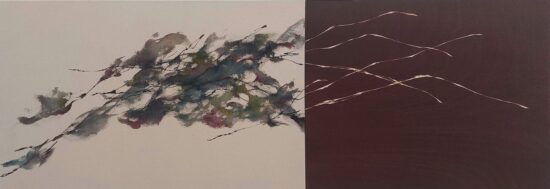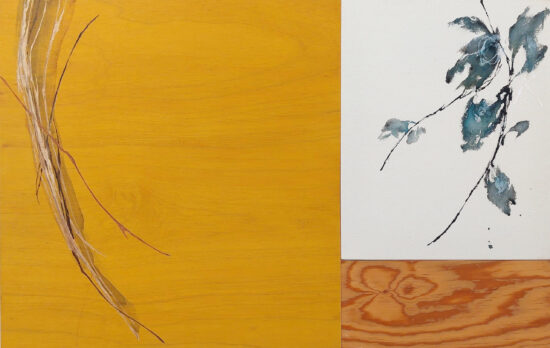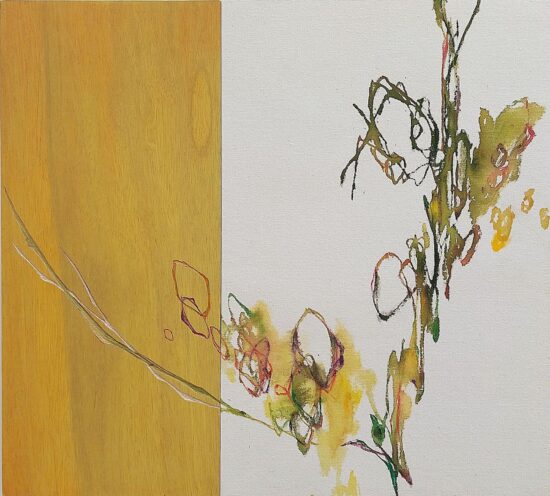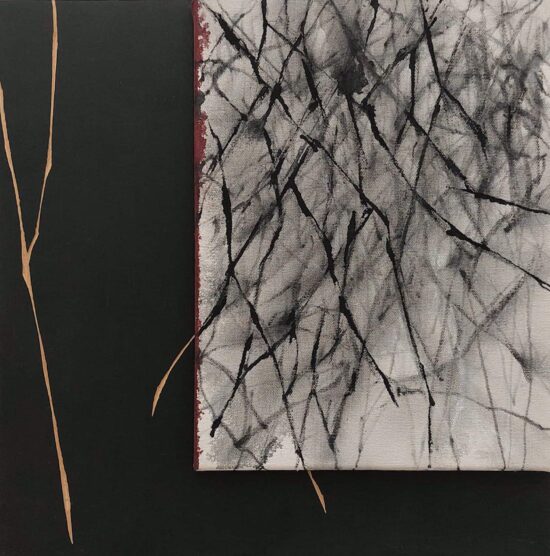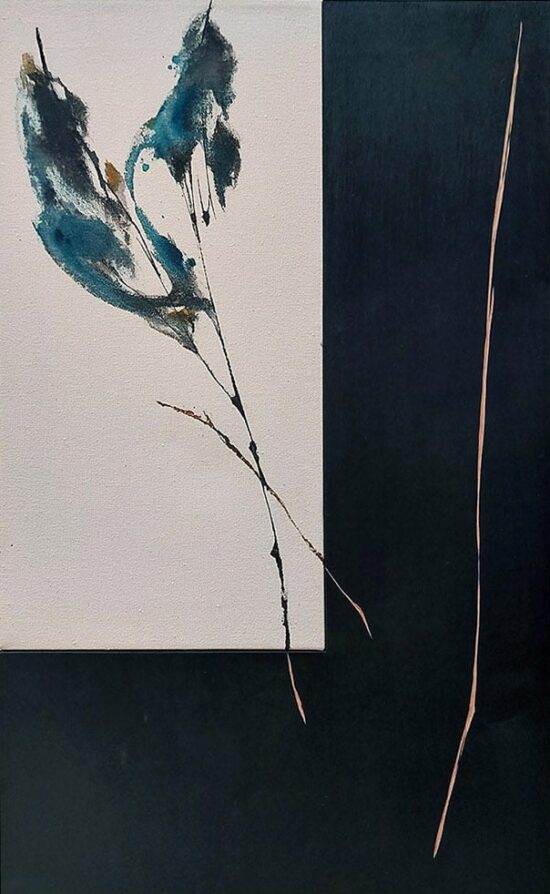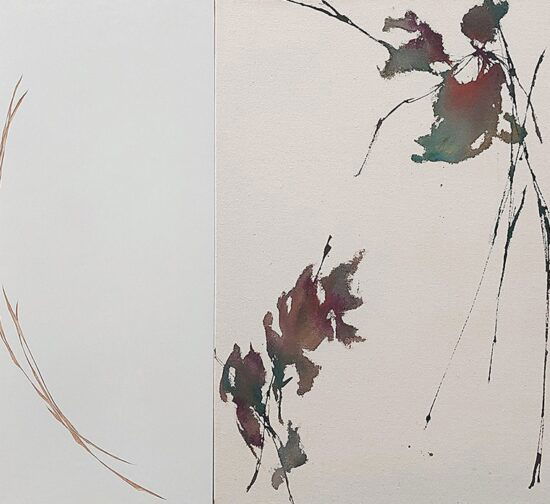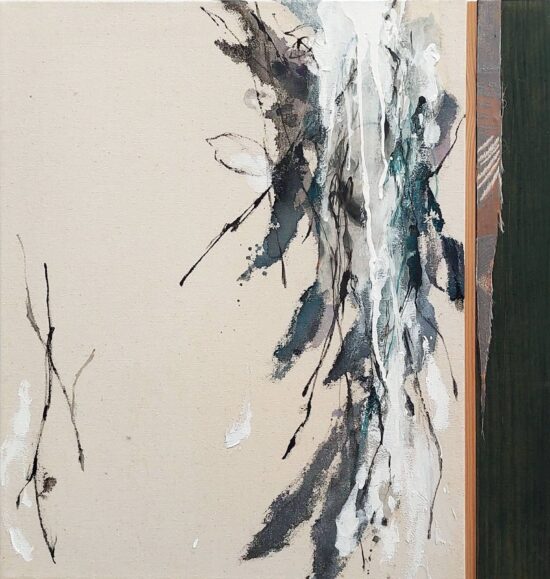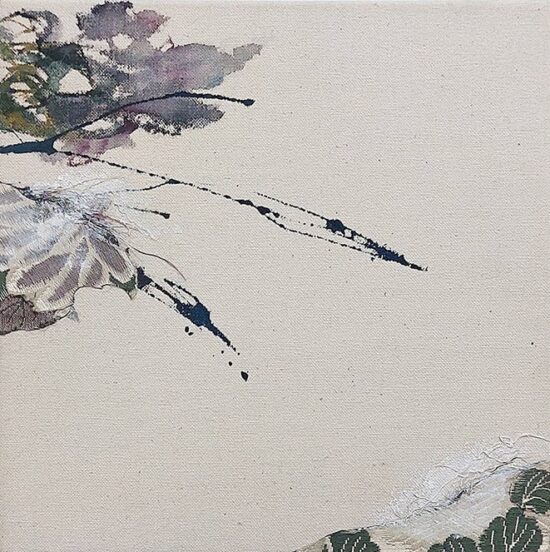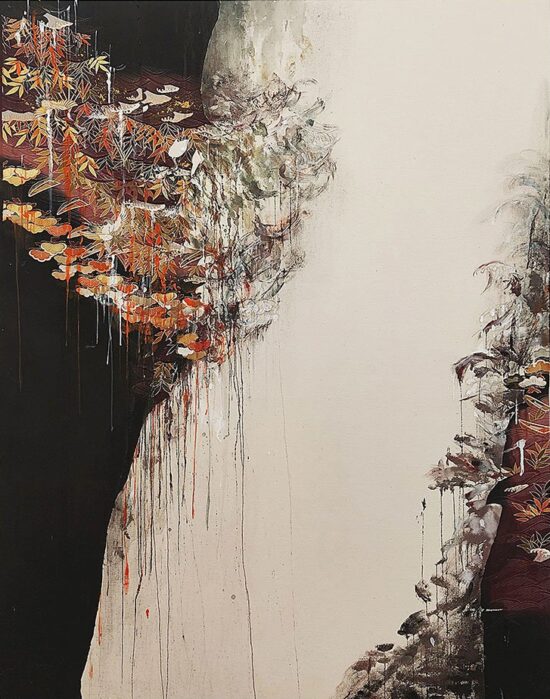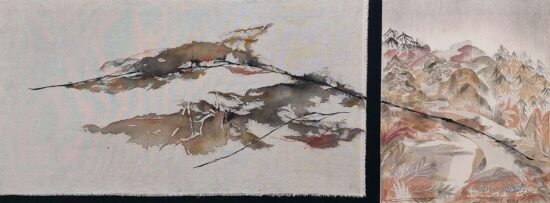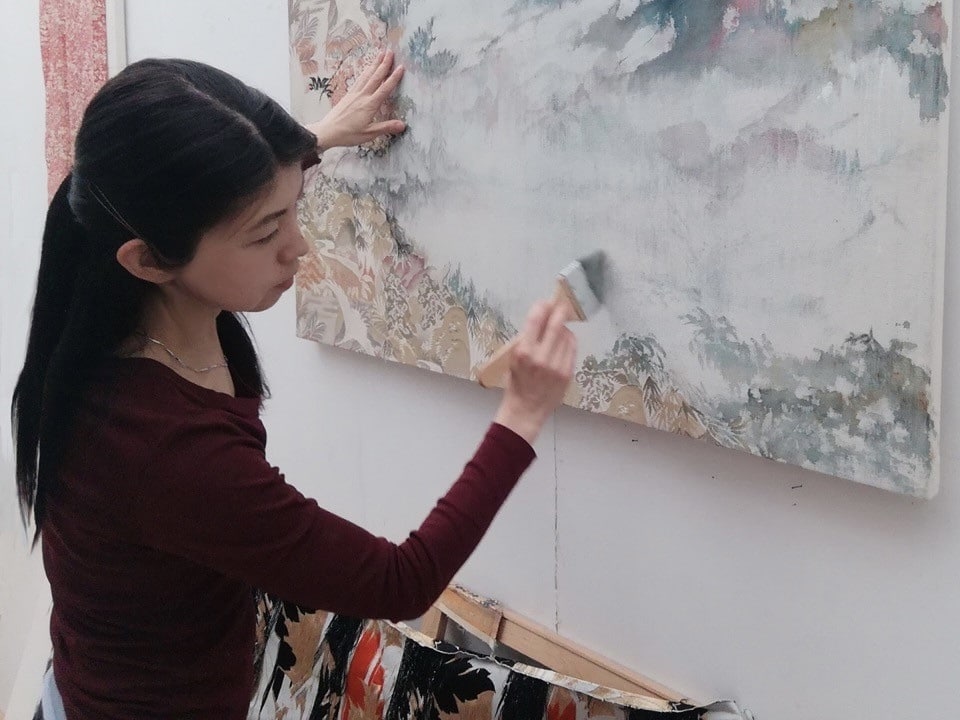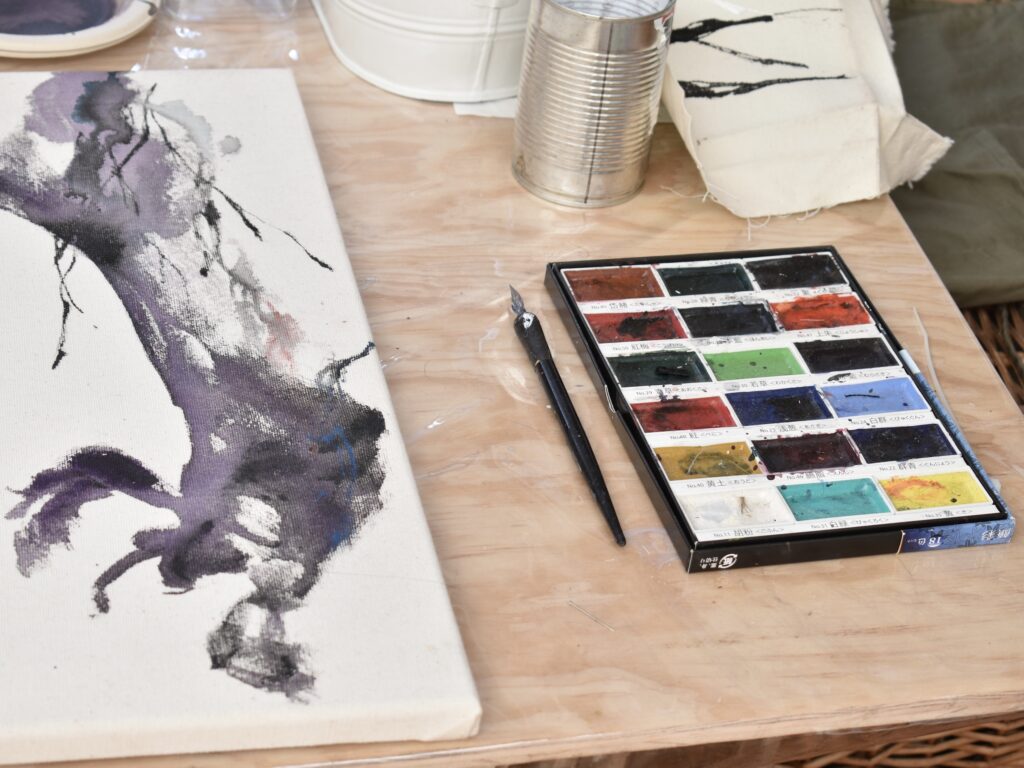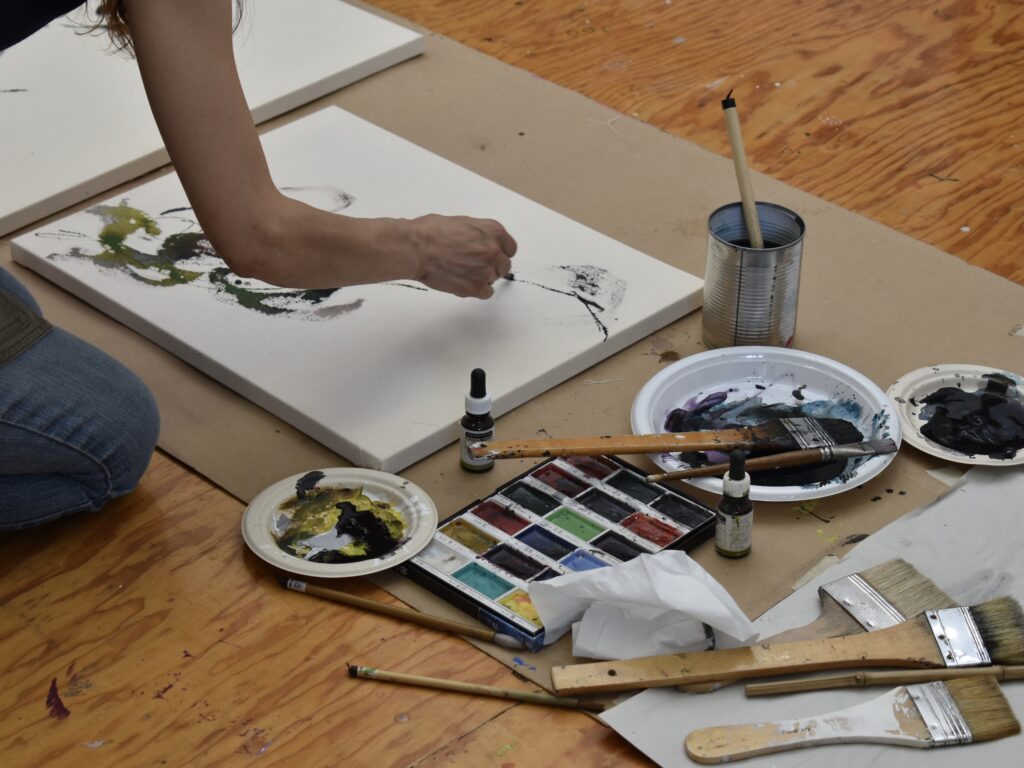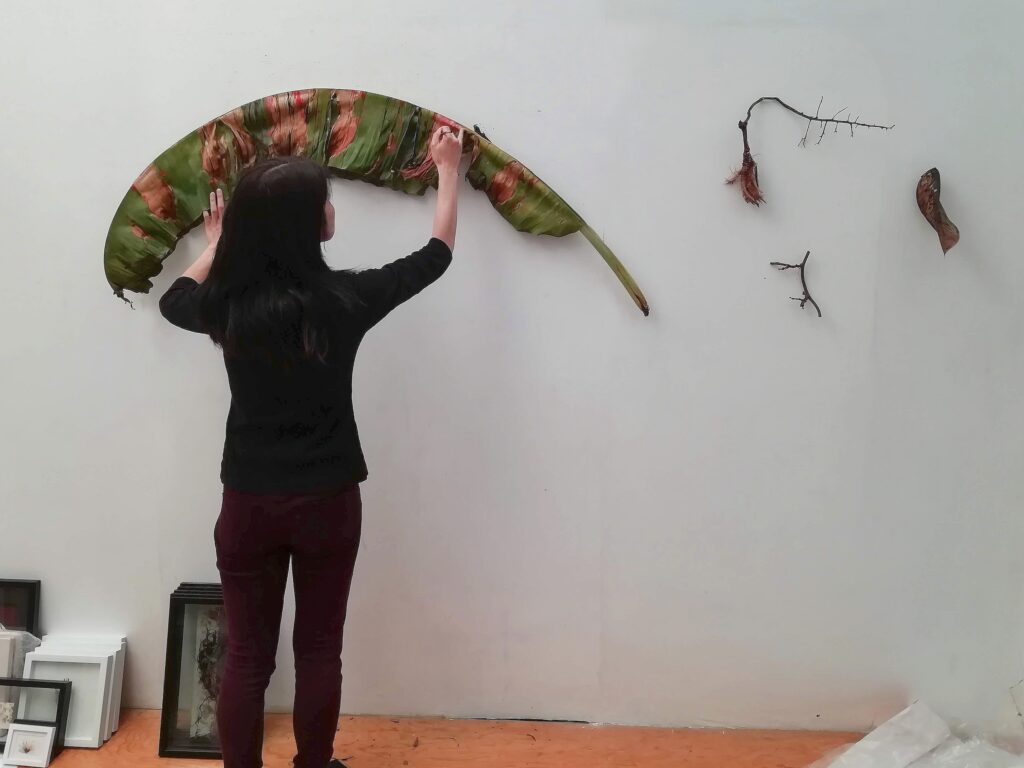Dialogue with nature
Remembrance
Biography
The research of the Japanese artist Maho Maeda, which centres on nature and its sounds, takes shape in harmonious pictorial compositions from which emerge both strength and poetry.
Maho Maeda: background and experimentations
Maho Maeda is a Japanese artist who lives and works in Mexico City, Mexico. She began her artistic career with a Bachelor’s and Master’s degree in Fine Arts at Kyoto City University of Arts, Japan, as well as an exchange programme at the Royal College of Art in London. She then moved to Germany and continued her studies at the Academy of Arts in Düsseldorf, where she graduated in 2008. She received several awards and grants during her career. Since the late 1990s, she has participated in group and solo exhibitions all over the world: Japan, Germany, Spain, Mexico, China, France, Luxembourg, Switzerland and South Korea.
Maho Maeda’s artistic practice is marked by a desire for experimentation and research, which takes shape in the creation of contemporary paintings, drawings, prints, photographs, videos and installations. She also combines several materials in her work, such as acrylic paint, oil, ink and pencil, and uses a variety of media, such as canvas, wood and fabric. In some of her works she also incorporates natural elements, such as leaves, branches and small stones, which she also uses as a support for the painting.
From music to art, from sound to line
Maho Maeda was not always a visual artist: she also had a passion for music and wanted to become a composer in her youth. She improvised at the piano, guided not by notes but by intuition and by the sounds she imagined in her head. She now tries to transpose these sounds or sound traces into her paintings, always composing them mentally before painting. In this way, she manages to materialise and represent the sounds through a very personal pictorial language, a visual composition in which the line is the protagonist.
For the artist, the line follows the sound, especially its path and movement. In Maho Maeda’s work, lines are broken, cut, bent, unstable. They change direction, cross each other, pass through empty spaces, sink into the engraved material or climb onto relief supports. In an almost minimal way, the lines draw harmonious compositions on monochrome or bichrome surfaces, combining with delicate abstract motifs that inevitably evoke the artist’s other important source of inspiration: nature.
Subjects and inspirations: nature and memory
The sounds that Maho Maeda wishes to reproduce on canvas are indeed those of nature. The artist’s reflection begins with this question: what is the sound of nature like? For example, what is the sound of a bud opening? and continues with a quest to translate this sound into image. The contemporary painter‘s sensitivity and curiosity for this subject lead her to an attentive and respectful observation of nature, its living elements, its changes and mutations. However, her works are not representations or imitations of nature, but rather personal interpretations of the sounds of nature materialised in a visual form and a concrete medium.
Another very important theme in Maho Maeda’s work is memory, of living beings and also of objects. With her art, the artist freezes a memory or a story in time and brings it to the attention of the observer. This search sometimes guides the choice of materials used, as in the case of old Japanese kimonos used as a support for the painting. “Living beings, non-living things, everything has its own ‘history’ and eventually disappears. […] We are born, we grow up, then we die. Things are born (created), exist for a while and then disappear. The histories of each of them is immeasurable. I close my eyes, and then I ponder and evoke them.” Maho Maeda
CV
Education
- 2002-2008: Kunstakademie Düsseldorf, by David Rabinowitch / Germany
- 2008: Akademiebrief
- 2007: Meisterschülerin by David Rabinowitch
- 2005-2008: Guest student by Daniel Buren
- 1996-98: M.A. in Fine Arts, painting : Graduate school – Kyoto City University of Arts / Japan
- 1996: Royal College Of Art, London, Award of exchange program / England
- 1992-96: B.S. in fine Arts, painting :Kyoto City University of Arts / Japan.
Solo exhibitions
- 2023: “憶 REMINISCE” MUZI ART, Taipei / Taiwan
- 2023: “時を紡ぐ – weave time” HASHI Gallery, Mexico City / Mexico
- 2022: Raum für Kunst, Düsseldorf / Germany
- 2019: Casa Mariscal, Mexico City / Mexico
- 2015: Gallery Niepel bei Morawitz, Düsseldorf / Germany
- 2012: gallery cornelia kamp, Sylt/ Germany
- 2011: Gallery Niepel bei Morawitz, Düsseldorf / Germany
- 2007: Gallery Murata & Friends, Berlin / Germany
- 2006: Kunsthaus Mettmann e.V., Mettmann / Germany
- 2006: Gallery Nicols, Düsseldorf / Germany
- 2006: Gallery Frank Gerlitzki , Luxemburg / Luxemburg
- 2005: DOROTHEUM, Düsseldorf / Germany
- 2005: Haus zum Haus, Ratingen / Germany
- 2005: JANSSEN-CILAG, Neuss / Germany
- 2004: Forum Wasserturm, Meerbusch / Germany
- 2003: Dr. Flores , Düsseldorf / Germany
- 1999: Gallery VEGA , Osaka / Japan
- 1999: Gallery Haku , Osaka / Japan
- 1998: D: LOOP , Kyoto / Japan
- 1997: Fujiya Gallery , Matsuzaka / Japan
- 1997: Galerie 16 , Kyoto / Japan
Group exhibitions
- 2023: “Sphere, international salon of contemporary art”, JEREZ 2, Mexico City / Mexico
- 2022: “nomansland academy” Alternative Art space IPO, Seoul / South Korea
- 2022: “48 Stunden Neuköln“ Kunstraum Reuter, Berlin / Germany
- 2022: Hashi Gallery, Mexico City / Mexico
- 2022: “HIDDEN_MESSAGES” Gallery Cenzontle, Mexico City / Mexico
- 2021: “Agua, Fuego, Tierra, Aire, Diversidad” Paraná. / Argentina
- 2021: “HIDDEN_MESSAGES” AllArtNow, Stockholm / Sweden
- 2020: “RE: Art against gender violence” UAEM, Toluca / Mexico
- 2019: “CORAZÓN :PULSO Y RESONANCIA” Extramural Museum, Cozumel / Mexico
- 2018: “Works of Paper, Works on Paper 2018” CASO-Contemporary Art Space Osaka / Japan
- 2017: “IROHA” Museum of Art and History of Guanajuato, Guanajuato / Mexico
- 2017, 2014: “Hacer Ser” CAAI-Incan, Mexico City / Mexico
- 2017: “Arte Naturaleza” , Botanical Garden in Chapultepec, Mexico City / Mexico
- 2016 : “Silent Night” espace apart, Diekirch / Luxembourg
- 2016 : “Silent Night “ espace Bateai Lavoir, Paris / France
- 2014: “Hacer Ser” CAAI-Incan, Mexico City / Mexico
- 2014: “meXiao” Guangdong Contemporary Art Center, Guangzhou / China
- 2014: “Artistas que dibujan el aire”, Galería Arte Hoy, Mexico City / Mexico
- 2012: “Obra en construccíon”, Casa Virrey de Mendoza, Mexico City / Mexico
- 2011: “Bus stop project”, T.A.C.O. , Mexico City / Mexico
- 2010: Galerie Bengelsträter, Iserlohn / Germany
- 2009: “LÍNEAS ENCONTRADAS” , T.A.C.O. / Mexico
- 2008: Mediaan art award / Germany
- 2008: 37 Kunst-Herzen für UNICEF”, Düsseldorf, Köln, Hamburg and Essen/ Germany
- 2008: Galerie Bengelsträter, Iserlohn / Germany
- 2008: “WAHRHEIT IST, WAS UNS VERBINDET”, Carl von Ossietzky Oldenburg University, Oldenburg / Germany
- 2008: Galerie am Platz des Friedens (two-person exhibition), Hanau / Germany
- 2007:. 2006 Kunsthalle Koblenz / Germany
- 2005: Gallery cornelia kamp, keitum(sylt) / Germany
- 2005: Die Drostei, Pinneberg / Germany
- 2005: Kunstturm Ratingen / Germany
- 2005: Kunstraum, Düsseldorf / Germany
- 2005: galerieXprssns (two-person exhibition), Hamburg / Germany
- 2004: “alteracíon ” Casa Frissac, Mexico city/ Mexico
- 2004: “No.1” Die Kulturmeile an der Ruhrtalstraße, Essen / Germany
- 2004: Boss Raumgestaltung, Erkelenz / Germany
- 2004: Airport Gallery, Frankfurt / Germany
- 2004: City Gallery Kaarst, Kaarst / Germany
- 2003: Gallery Schwenk (two-person exhibition) Castrop- Rauxel / Germany
- 2003: “13. Kö Galerie Kunstförderpreis” Kö Galerie, Düsseldorf / Germany
- 2003: Pavillion der Galerie Brusten Wuppertal (two-person exhibition), Wuppertal / Germany
- 2000: “Kyoten” Kyoto city Art Museum, Kyoto / Japan
- 1999: “Compact Disc Exhibition” KAVC, Kobe / Japan
- 1998: “The 10th Anniversary Abrod Award Exhibition” Shijo Gallery, Kyoto / Japan
- 1998,97: “Unesco Art Exhibition” Kultur Museum, Kyoto / Japan
- 1997: “UNDULATION” (two-person exhibition) SONY SOMIDO Hall , Tokyo / Japan
- 1996: “Japan & Spain Contemporary Artist Exhibition” Madrid / Spain
- 1996: “Drawing of Today” Shinanobashi Gallery, Osaka / Japan
- 1995: “TABULA RASA” Shijo Gallery , Kyoto / Japan
- 1995: “sound/+” (two-person exhibition) , Geidai Gallery, Kyoto / Japan
- 1995: “be charmed” (two-person exhibition) , Geidai Gallery, Kyoto / Japan
Collections
- 2008: Carl von Ossietzky University Oldenburg / Germany
Awards & Residencies
- 2008: ” 1st Prize “ Mediaan art award / Germany
- 2006-2007: fellowship, “ Japanese Government Overseas Study Programme for Artists ” / Japan
- 2005: ” 1st Prize “ 15.th Kö Galerie art award / Germany
- 2004: “ Special prize ” Art award for painting 2004 / Germany
- 2004-2005: fellowship “ POLA ART FOUNDATION ” / Japan
- 2000: “ Suda Preiz ” KYOTEN / Japan
- 1996: Award of exchange program between Royal College Of Art, London England and Kyoto City University of Art, Kyoto Japan
- 1996: “ Dosokai syoreii Preis ” Kyoto City University of Art / Japan

